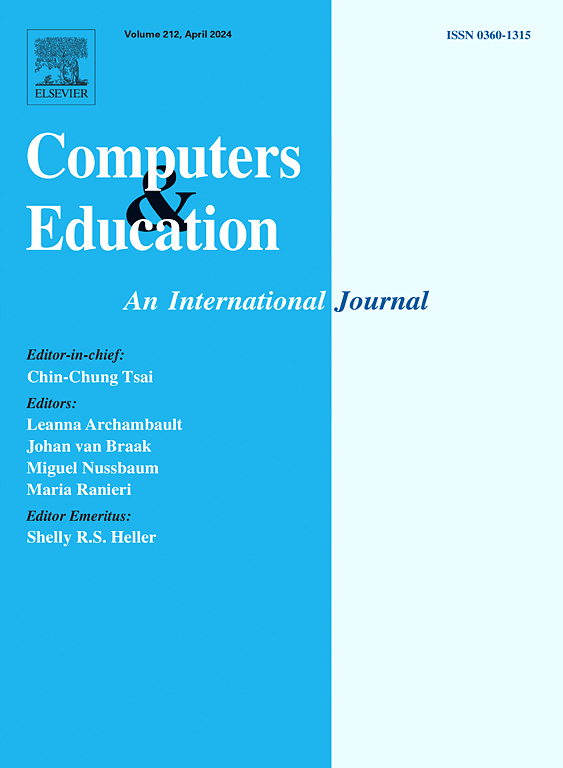Using virtual reality for enhancing neuroanatomy learning by optimizing cognitive load and intrinsic motivation
IF 10.5
1区 教育学
Q1 COMPUTER SCIENCE, INTERDISCIPLINARY APPLICATIONS
引用次数: 0
Abstract
This research investigates the effectiveness of virtual reality (VR) in enhancing neuroanatomy learning among medical students, focusing on optimizing cognitive load, intrinsic motivation, and user experience. A total of 77 s-year medical students participated in the study, which compared traditional video-based instruction with three VR conditions: active, guided, and passive.
The results demonstrate that VR significantly improved anatomical learning performance compared to traditional methods, particularly in the passive and active conditions. VR also enhanced intrinsic motivation, reduced extraneous cognitive load, and increased germane cognitive load. Interestingly, the guided VR condition yielded the poorest learning performance, although differences between the VR conditions were not statistically significant. These findings suggest that higher interactivity is not inherently linked to better learning outcomes in VR-based education.
The study highlights the importance of balancing interactivity and cognitive load in the design of effective VR learning environments. Overall, VR holds strong potential as an educational tool, but its instructional design must be carefully tailored to support both motivation and cognitive efficiency. Future research should further examine the role of interaction modes and learner expertise in shaping the instructional effectiveness of VR.

通过优化认知负荷和内在动机,利用虚拟现实增强神经解剖学学习
本研究探讨了虚拟现实(VR)在增强医学生神经解剖学学习中的有效性,重点是优化认知负荷、内在动机和用户体验。共有77名5年级医学生参与了这项研究,该研究将传统的基于视频的教学与三种VR条件:主动、引导和被动进行了比较。结果表明,与传统方法相比,VR显著提高了解剖学习性能,特别是在被动和主动条件下。虚拟现实还增强了内在动机,减少了外部认知负荷,增加了相关认知负荷。有趣的是,尽管虚拟现实条件之间的差异没有统计学意义,但引导虚拟现实条件的学习成绩最差。这些发现表明,在基于虚拟现实的教育中,更高的互动性与更好的学习成果并不必然相关。该研究强调了在设计有效的VR学习环境时平衡交互性和认知负荷的重要性。总的来说,VR作为一种教育工具具有强大的潜力,但它的教学设计必须精心定制,以支持动机和认知效率。未来的研究应该进一步研究互动模式和学习者专业知识在塑造虚拟现实教学效果方面的作用。
本文章由计算机程序翻译,如有差异,请以英文原文为准。
求助全文
约1分钟内获得全文
求助全文
来源期刊

Computers & Education
工程技术-计算机:跨学科应用
CiteScore
27.10
自引率
5.80%
发文量
204
审稿时长
42 days
期刊介绍:
Computers & Education seeks to advance understanding of how digital technology can improve education by publishing high-quality research that expands both theory and practice. The journal welcomes research papers exploring the pedagogical applications of digital technology, with a focus broad enough to appeal to the wider education community.
 求助内容:
求助内容: 应助结果提醒方式:
应助结果提醒方式:


